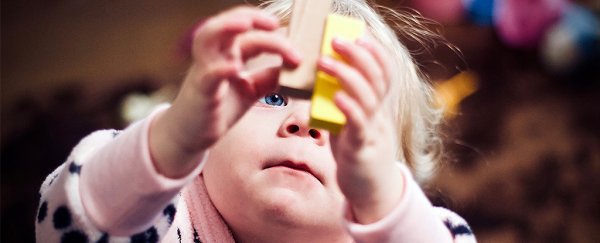Researchers have devised a new method to predict the hand preference of babies while they're still in the mother's womb.
The discovery adds to a growing body of research showing our handedness is innate - but on top of that, the screening method could also come in handy for identifying neurological disorders.
Handedness before birth has seen plenty of research before, with studies showing there's a correlation between postnatal hand preference and which thumb the fetus sucks while in the womb.
But while it seems to be clear that innate factors and even genetics contribute to a person's hand-preference, there's still a lot we don't know about how exactly this preference develops.
With that question in mind, a team of researchers in Italy have developed a prenatal screening method that could accurately predict whether a baby turns out left- or right-handed.
The method uses four-dimensional ultrasonography to map and characterise the hand movements of fetuses in real time.
Borrowing their methods from an earlier study on fetal movement, the researchers specifically focussed on movements that require higher precision - such as when the fetuses directed their hands towards the eyes - contrasting them with less-precise movements, like shoving a hand against the wall of the uterus.
The team recruited 29 women with healthy single-baby pregnancies and monitored the fetuses at gestational weeks 14, 18, and 22 - each time for a session of 20 minutes, videotaping the ultrasound footage for later data crunching and analysis.
They found that around week 18, the fetuses already had fairly well-established hand dominance, indicated by the fact they could perform faster high-precision movements with the preferred hand.
Based on the ultrasound results, the researchers predicted the handedness of the children, and followed up after nine years to see if they got it right.
Their track record ended up being remarkably good - depending on which parameters were included in the analysis, the predictive power of the ultrasounds ranged between 89 and 100 percent.
"Our method allows to reliably account for postnatal handedness early on and with fewer observations," the team writes in the study.
On top of just predicting handedness, the researchers think that their method for analysing fetal hand movements could benefit prenatal screening in regard to "pathological aspects", such as the link between left-handedness and autism or depressive symptoms.
"Our method for reliably assessing handedness prenatally may help to catch 'early' neurological problems and to counteract child development disparity signalled by handedness," they write.
However, the next step in the research will be to test their new method on larger sample sizes, so we can't expect to have a diagnostic left-handedness test offered to expecting mothers just yet.
The study was published in Scientific Reports.
